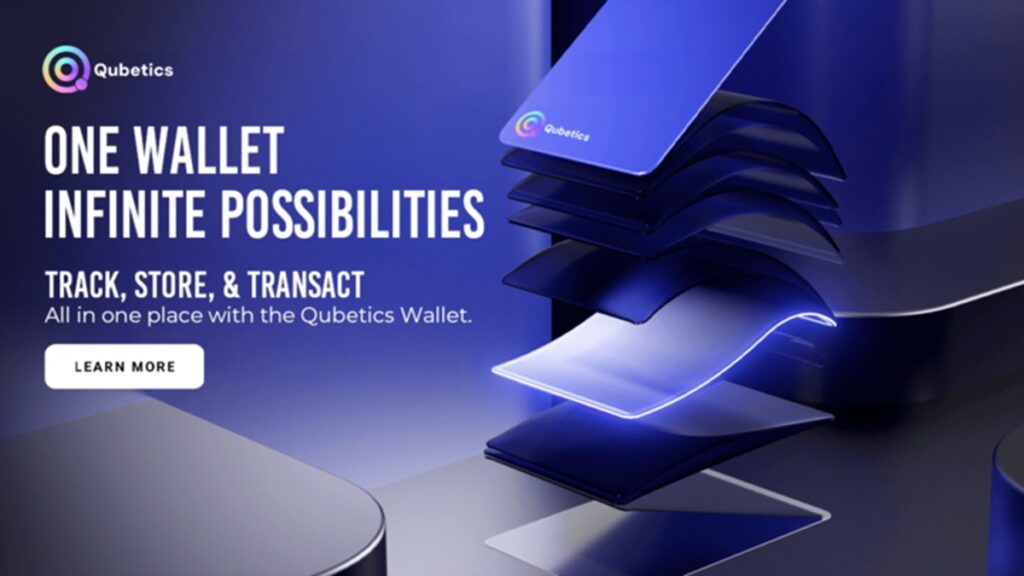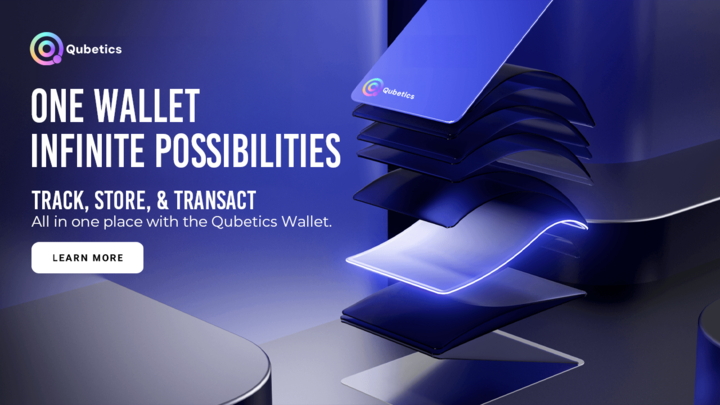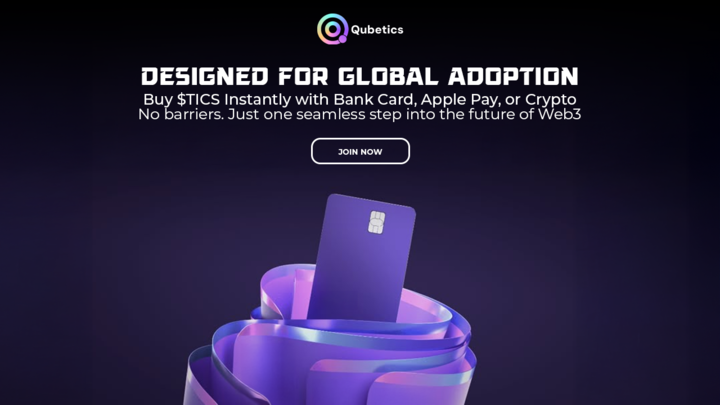Could a single policy decision mark a major turning point in how blockchain innovation takes root across the United States? Arizona Governor Katie Hobbs has made headlines by vetoing two high-profile cryptocurrency bills—one that proposed creating a state Bitcoin reserve and another aimed at expanding broader crypto adoption. However, what stood out was her approval of a Bitcoin ATM law that prioritizes consumer protection. This dual stance signals a growing urgency for legal clarity and infrastructure control in crypto, while still allowing selective innovation to move forward. As regulatory frameworks inch toward maturity, digital assets positioned with real-world relevance—such as those enabling streamlined transactions and institutional-level integrations—are gaining traction. Among such platforms, Qubetics has emerged as one of the few projects gaining momentum in tandem with these shifts, reflecting what might be the next big wave of application-focused blockchain platforms.
Qubetics ($TICS) steps in at a time when traditional assets and first-generation tokens are struggling to meet the logistical and regulatory needs of global users. Designed as a Web3-native multichain aggregator, Qubetics is addressing challenges that legacy projects like Ethereum or early DeFi protocols haven’t fully solved—particularly in the space of fast, affordable, and secure cross-border payments. Meanwhile, BNB has surged nearly 40% from its yearly lows, driven by significant user growth and transaction volume increases, as reported by Crypto News. Solana, on the other hand, is pushing structural limits with the rollout of a meta-blockchain proposal that could revolutionize data availability by allowing cost-based routing across chains. All three platforms are uniquely contributing to the current wave of innovation, but Qubetics is standing out as one of the top coins to join today, especially due to its use-case clarity and a highly structured crypto presale strategy already capturing attention.
Qubetics Is Redefining Cross-Border Transactions for Businesses and Individuals
Qubetics is building what many before it failed to deliver—a blockchain system that solves real logistical inefficiencies around international money movement. Unlike protocols that only scale transaction speeds or DeFi trading, Qubetics focuses on empowering enterprises and financial institutions with near-instant, secure cross-border settlement. This is made possible through the TICS token, which powers a system of smart partnerships and integrated liquidity routes to deliver real-time transaction capabilities. For example, a mid-sized import/export firm dealing with seasonal demand fluctuations could use Qubetics to settle payments instantly with partners in Asia or Europe, avoiding the delays and costs of SWIFT or traditional bank wires. For retail users, the experience translates into faster, more affordable remittances—particularly meaningful for cross-continental families relying on consistent and secure fund transfers.
Built with scalability and usability at its core, the Qubetics Network is more than a Layer-1 protocol; it’s a cross-chain connector capable of streamlining settlement without friction. Its commitment to transparent pricing and high interoperability sets it apart from other Web3 experiments that often struggle with adoption due to steep learning curves or lack of practical relevance. What makes this platform especially compelling in today’s market is its readiness to address global business pain points in ways that BNB and Solana haven’t yet prioritized. It’s not just about performance; it’s about meaningful functionality. This grounding in real-world usability, paired with the platform’s structured go-to-market execution, solidifies Qubetics as one of the top coins to join today, offering early adopters and financial participants a truly differentiated use case.
Why This Top Coins to Join Today Opportunity Feels Designed for 2025’s Smartest Crypto Participants
Currently in Stage 34 of its crypto presale, Qubetics has raised over $17 million with more than 512 million $TICS tokens already sold to a rapidly growing base of 26,300+ participants. The price per token now sits at $0.2532, and what sets this presale apart is its predictability—every stage lasts exactly seven days and ends at 12 AM every Sunday, with a 10% price increase following each cycle. That structured timing allows participants to strategically enter, knowing that value increases are not based on speculation but pre-set, transparent mechanics. This format continues to draw serious traction, with Qubetics presale often discussed as one of the most organized and transparent in the space, reinforcing its place among the top coins to join today for those seeking real value and planning their entry into a reliable crypto presale.
For those evaluating ROI, the numbers present a compelling argument. A $5,000 investment at the current price could yield 19,740 tokens. If $TICS hits $1 post-presale, this would result in $19,740 in returns, reflecting a 294.84% ROI. If it climbs to $5, those tokens would be worth $98,700—translating to a 1,874.21% ROI. At $6, the same tokens return $118,440, marking a 2,269.05% ROI. Projections for $10 and $15 valuation push ROI to 3,848.42% and 5,822.63%, respectively. These figures aren’t speculative wish lists; they’re calculated based on fixed entry prices and achievable post-mainnet milestones. For early buyers looking for the best crypto presale with a real product roadmap, clear ROI logic, and an upcoming Q2 2025 mainnet launch, Qubetics remains a strategic entry point among today’s projects. For those specifically looking to engage with the Qubetics presale, this is one of the most structured and opportunity-rich events unfolding in real-time.
BNB Posts Explosive Growth with Record-Breaking User Metrics
BNB is breaking away from its earlier 2024 performance and making serious headlines. Its price surged to $690, which is nearly 40% above its recent lows. This wasn’t just a market fluke—it came on the back of clear indicators: a 46% spike in active addresses (now totaling 7.67 million), a 62% increase in total transactions (reaching 51.9 million), and $4.5 million in weekly fees generated on the BNB Chain. According to Crypto News, these numbers reflect strong utility growth, driven by more users interacting with dApps and DeFi protocols built on the BNB Chain.
These statistics indicate a platform that’s not only sustaining attention but scaling in both depth and breadth. With fee generation up and network activity surging, BNB has reaffirmed its ability to stay relevant even as competition in the Layer-1 space intensifies. This development places BNB firmly in the category of top coins to join today, backed by quantifiable adoption and not just token inflation or market noise.
Solana Pushes the Limits with Meta-Blockchain Concept
Solana has again taken a bold step in redefining blockchain infrastructure. Co-founder Anatoly Yakovenko has introduced a concept called the “meta-blockchain,” aimed at solving a long-standing issue—data availability and cost-efficiency. The proposal allows developers to post data to whichever blockchain is cheapest at the moment, streamlining processes and making Solana-based apps more flexible and affordable. According to Bitcoin.com, this could significantly reduce congestion and increase transaction throughput for high-demand applications.
This vision, if implemented successfully, has the potential to revolutionize the way networks process and prioritize data. It’s less about raw speed and more about intelligent resource allocation, something very few blockchains have addressed. With this proposal gaining attention, Solana solidifies its role among the top coins to join today, proving its commitment to solving real infrastructure constraints as the market matures.
Arizona’s Regulatory Signals Could Shape the Future of All Three Coins
Governor Katie Hobbs’ veto of broad cryptocurrency legislation but approval of a Bitcoin ATM law shows how U.S. states are fine-tuning their approach to blockchain governance. This development matters for all three projects. For Qubetics, which is still in presale, this kind of legislative clarity provides a safer path to launch, especially with its predictable 10% weekly price increase that eliminates the usual volatility new tokens face. For BNB, tighter rules could reinforce Binance’s push toward regulated use cases. Solana’s flexible architecture, meanwhile, aligns well with states that want innovation but under tighter consumer-focused regulations.
In short, all three are equipped in different ways to benefit from this trend. Regulatory clarity won’t slow them—it could empower them. And for Qubetics specifically, the stability built into its pricing model during the crypto presale could make it even more attractive as rules become more defined across key markets.
Conclusion: Which Direction Will Crypto Take? Follow the Coins Built for Utility
Each of these projects—Qubetics, BNB, and Solana—brings something tangible to the table at a time when speculative models are falling out of favor. BNB is backed by data and fee-driven growth, while Solana is chasing breakthrough architecture to solve real problems in scalability and cost. Qubetics ties it all together with a use case that addresses everyday financial hurdles through seamless cross-border payments and an exceptionally structured token rollout.
For those evaluating entry opportunities in a tightening but maturing crypto market, now may be the right moment to join this best crypto presale, or at least keep a sharp eye on these top coins to join today that seem to be doing more than just promising—they’re already building.
For More Information:
Qubetics: https://qubetics.com
Presale: https://buy.qubetics.com/
Twitter: https://x.com/qubetics
FAQs
Why is Qubetics one of the top coins to join today?
It solves key issues in cross-border payments and offers a structured crypto presale with clear growth logic.
How is BNB performing compared to other blockchains right now?
BNB is reporting major network growth with a 40% price increase, 46% user growth, and $4.5 million in weekly fees.
What is Solana’s meta-blockchain and why does it matter?
Solana’s meta-blockchain concept could significantly lower costs and increase flexibility for developers using its chain.
Press releases or guest posts published by Crypto Economy have been submitted by companies or their representatives. Crypto Economy is not part of any of these agencies, projects or platforms. At Crypto Economy we do not give investment advice, if you are going to invest in any of the promoted projects you should do your own research.








